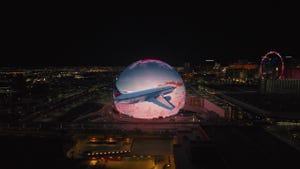Private drones ordered to stay away from Harvey rescue efforts
Aviation regulators imposed a prohibition on hobbyist drones and other civilian aircraft flying in the area affected by Tropical Storm Harvey after concerns were raised about potential interference of rescue efforts.
August 31, 2017

The Federal Aviation Administration issued the new restrictions Tuesday following one of the worst natural disasters in recent history as rains continue to pummel parts of Texas in a deluge that began Friday night.
Air Force Major General James Witham called the potential that a small civilian drone might interfere with a military plane aiding in the relief “a big deal” in a Pentagon briefing Tuesday.
“And as much as possible, if we could keep civilian drones out of the crowded skies that are already crowded with people doing response and recovery efforts, that would certainly be helpful,” Witham said. “Those present a hazard for our crews operating those helicopters in the region.”
The FAA’s flight restrictions prohibit most civilian flights as high as 3,000 feet altitude across hundreds of square miles around greater Houston. The FAA is allowing exceptions to the flight ban for search and rescue teams, the military and law enforcement. In the past the agency also has tried to accommodate news media helicopters and drones if the operator is properly licensed.
Safety issues with drones in emergency zones have arisen multiple times in the past, mostly when they were spotted flying over wildfires in California and other Western states. An Arizona sheriff arrested a man in July for allegedly flying his drone near a wildfire in that state.
Disasters can draw hobbyists who use small drones to take photographs or videos or just observe activities.
The Texas Military Department, which oversees the state’s National Guard and Air National Guard units, tweeted on Saturday, “We are seeing civilian drones that pose EXTREME risks to our rescue pilots and crews in high need areas.”
The department didn’t respond to an emailed request for more details.
There have been no official reports from the FAA about specific incidents, though relief agencies in the throes of helping people may immediately notify the aviation authority.
The FAA created the no-fly zone “to provide a safe environment for aviation operations carrying out disaster response and recovery missions,” it said on its website.
About the Author
You May Also Like






